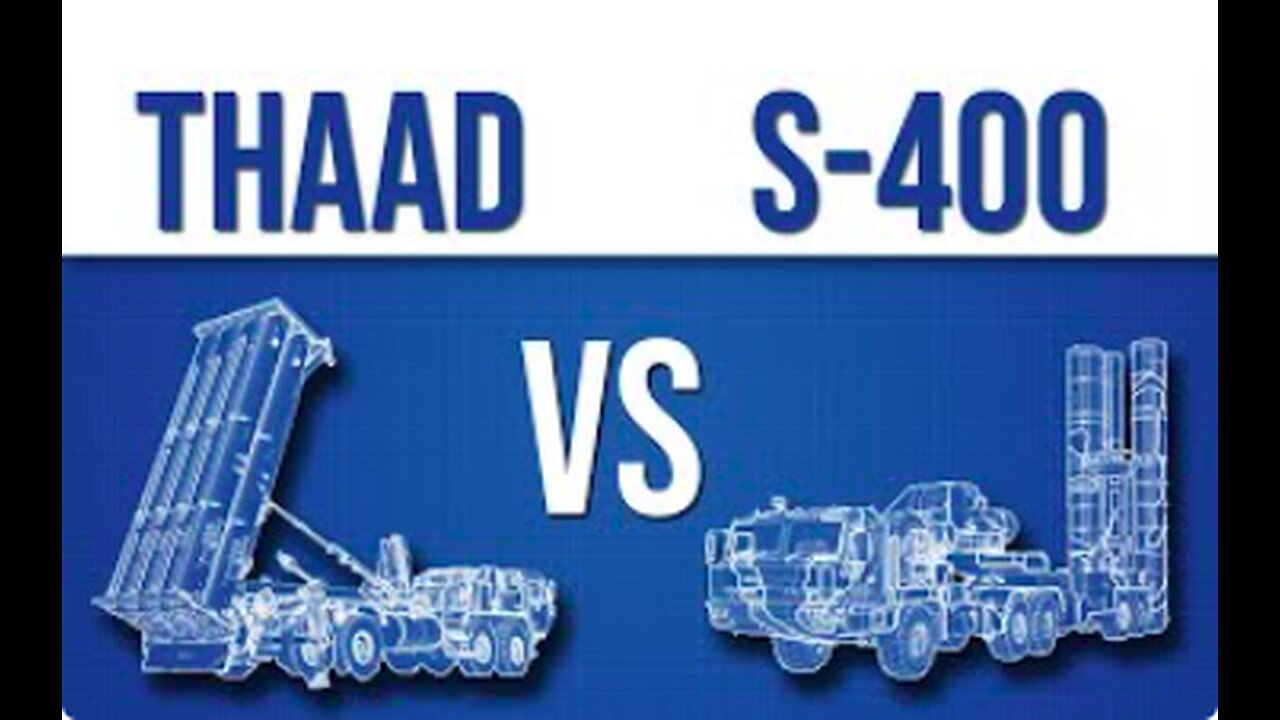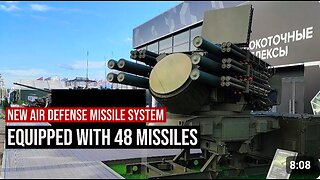Premium Only Content

THAAD vs S-400 - which is better? MilTec
Air-defense systems are deployed to safeguard a country’s borders against imminent ballistic missile and aircraft attacks. The United States’ THAAD and S-400 are arguably the best all-around strategic SAM systems in operation today. However, it is important to remember that comparing one air-defense system to another without considering the bigger picture of a particular battlefield is never a good idea.
-
Nothing works on its own in a modern battlefield. Any given asset or system has a specific job to perform, and it collaborates with the larger network to achieve the goal. However, we would try to compare these systems in terms of speed, power, operational range and radar capability in order to determine which air-defense system is better.
-
READ MORE
----->>>>
1. Specifications
THAAD is an American anti-missile defense system specifically designed to shoot down ballistic missiles in their terminal phase by intercepting with kinetic kill technology. The THAAD entered production in 2008. The cost of a single THAAD battery is around USD900M. A battery consists of at least 6 launcher vehicles, each equipped with 8 missiles, 2 mobile tactical operation centers and ground-based radar. THAAD missiles can strike a ballistic missile 125mi away with lightening speed of Mach 8.2. The service ceiling of a THAAD missile is 93mi.
-
On the other hand, S-400 is both anti-aircraft and anti-missile system developed in the 1990s as an upgrade of the S-300 family. It uses the most advance interceptors for its anti-ballistic missile role. S-400 is even capable to defend against stealth aircraft. As of today, the cost of single S-400 artillery battalion is around USD550M, which consists of 9 launchers, 120 missiles, command, and support vehicles. The system can hit a target 250mi away with blistering speed of Mach 14. The service ceiling of an S-400 missile is 19mi.
-
2. Engine Power
A THAAD missile is powered by a single stage rocket engine… On the contrary, S-400s can fire a wide variety of missiles with varying ranges…
3. Radar & Avionics
The THAAD is equipped with AN/TPY-2 ground-based radar for surveillance, threat classification and tracking. The radar is X-band active electronically scanned array radar capable of detecting low RCS targets with better resolution. It can detect ballistic missile at range up to 2,900mi…
-
While the S-400 is supported by active electronically scanned array radar featuring 3D surveillance and target tracking. The radar is mounted on an 8x8 vehicle, which provides excellent mobility…
-
4. How does it work?
The THAAD radar detects and tracks ballistic missile threats before it reenters the earth’s atmosphere. An interceptor missile is fired towards the enemy projectile in its terminal phase. The interceptor missile slams into the enemy missile, causing it to explode before it reaches its target by using kinetic kill…
-
Similarly, S-400 radar detects and tracks the enemy projectile. It passes on the target data to the launcher. A gas system launches missiles from the launch tubes up to 98ft into the air before the main engine kicks in. S-400 can destroy a target within the distance of 250mi with speeds of over Mach 14…
For detailed conclusion watch the video. Video by (YT@Grid88)
-
ALSO WATCH
---->>>>
15 Most Advanced Russian Weapons - MilTec
---->>>>
https://rumble.com/v29sl3c-15-most-advanced-russian-weapons-miltec.html
-
CHANNEL DISCLAIMER
©️ COPYRIGHT / LICENSING
we invite every content owner and video producer to contact us by email
(MilTecInnovations@proton.me)
————————————————
Copyright Disclaimer under Section 107 of the Copyright Act of 1976, allowance is made for "fair use" for purpose such as criticism, comment, news reporting, teaching, scholarship, and research. Fair use is a use permitted by copyright statute that might otherwise be infringing. Non-profit, educational or personal use tips the balance in favour of fair use. IF YOU HAVE ANY LICENSE ISSUES, PLEASE CONTACT US BY EMAIL(MilTecInnovations@proton.me) to RESOLVE THE PROBLEM and discuss a COOPERATION
-
 8:07
8:07
Military Technologies, Innovations & Future Weapons
16 days agoRussia Unveils New Pantsir -SMD Air Defense Missile System Equipped with 48 Missiles at IDEX 2025
227 -
 1:05:46
1:05:46
Candace Show Podcast
5 hours agoHarvey Speaks: Shocking Emails Revealed | Ep 2
28.5K14 -

Michael Franzese
2 hours agoRFK Was Right… But It’s Worse Than You Think | Jillian Michaels
12.5K10 -
 1:23:47
1:23:47
Redacted News
2 hours agoEPSTEIN BOMBSHELL! SOMETHING VERY STRANGE IS GOING ON HERE, WHO ARE THEY PROTECTING? | REDACTED LIVE
77.7K113 -
 1:05:37
1:05:37
Sean Unpaved
4 hours ago $2.18 earnedUnpaved
26.7K5 -
 56:40
56:40
VSiNLive
2 hours ago $1.55 earnedFollow the Money with Mitch Moss & Pauly Howard | Hour 1
21.7K4 -
 1:00:52
1:00:52
In The Litter Box w/ Jewels & Catturd
1 day agoFIRST 40 DAYS | In the Litter Box w/ Jewels & Catturd – Ep. 754 – 3/4/2025
64.2K33 -
 1:20:04
1:20:04
Awaken With JP
6 hours agoHow Impressive is Zelensky? - LIES Ep 81
75.5K41 -
 2:14:02
2:14:02
The Quartering
6 hours agoEpstein Files FINALLY Arrive, Zelensky CRAWLS Back & Trump Cuts Off, Oscars Sink To New Low & More
96.4K45 -
 57:11
57:11
Russell Brand
4 hours agoBREAK BREAD EP. 16 - SEAN FEUCHT
86.4K5